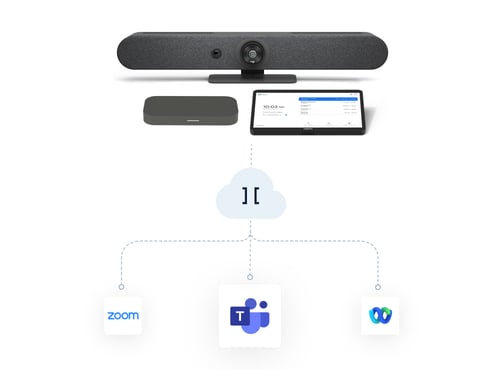Adaptive Composition uses artificial intelligence (AI) to provide a richer, video-first meeting experience tailored for the enterprise
Today Pexip announced Adaptive Composition, a new AI-powered technology designed to put people, not systems, at the heart of the meeting experience. With real-time face detection, auto-framing, and optimized use of screen real estate, Pexip’s meeting experience works with any camera-enabled device and empowers people to engage with each other in a better way.
Interested in experiencing AI-powered video engagement tech with Pexip?
Get started with Adaptive Composition in your organization's video meeting environment.
Want to hear more from our partners?
“The meeting experience is often broken due to the complexity of technology and user experience challenges. With Adaptive Composition, Pexip is taking an innovative, human-centered approach to enhance the user experience through automation that allows the technology to get out of the way and empowers meeting participants to focus on collaboration. While others are attempting to achieve this from a room perspective (i.e. zooming at camera level), Pexip is solving this at the platform level to provide a device-agnostic solution that works with the technology you already have.” - Rob Arnold, Principal Analyst, Frost & Sullivan
Pexip’s new meeting experience offers:
Participant auto-framing: Often, users do not realize how their video camera is framed in a meeting, causing them to appear off-center or small in a large room. By automatically framing participants for an optimal view, users have a more natural, engaging experience. Adaptive Composition is device-agnostic and works with any camera or video system; it also improves the capability of room-based camera framing.
Intelligent composition: Traditional meeting services rely on basic voice detection to determine who is featured. When a person or group makes noise, other groups are often demoted to a smaller view, making people’s expressions and reactions less visible. Pexip’s Adaptive Composition prioritizes rooms with more people, in addition to the active speakers, to ensure the most active rooms remain featured at all times. It also makes better use of screen real estate by reducing the unused space around video feeds.
New meeting indicators: Every meeting is different. People may join from different devices, join late, join the wrong meeting, or start recording in the middle of a conversation. Pexip’s new meeting experience gives hosts the information they need to reduce disruptions during the meeting. New embedded meeting indicators show attendee count, audio-only users, and lock and recording status, so both hosts and attendees can focus on the meeting itself. In addition, display names appear when participants speak, ensuring that current speakers are easily identified. This creates a less distracting user interface and allows individual speakers to remain in focus.
“We want to make virtual meetings just as effective as in-person meetings. With our AI-driven, video-first meeting approach, we’re putting every person on an equal footing, ensuring that everyone can be seen and heard. By removing complexity for end-users, we can deliver an outstanding meeting experience for organizations around the world.” - Giles Chamberlin, Chief Technology Officer, Pexip
While dedicated video system and camera manufacturers offer similar framing functionality at the device level, Pexip is first to bring this experience to any participant, regardless of whether they join a meeting through a video room system, browser, or app. Adaptive Composition will be available as a tech preview in version 23 of Pexip’s self-hosted software, Pexip Infinity, expected to launch in Q1 of this year.
To learn more about Adaptive Composition please click here.
To see it in action, please watch this video.





